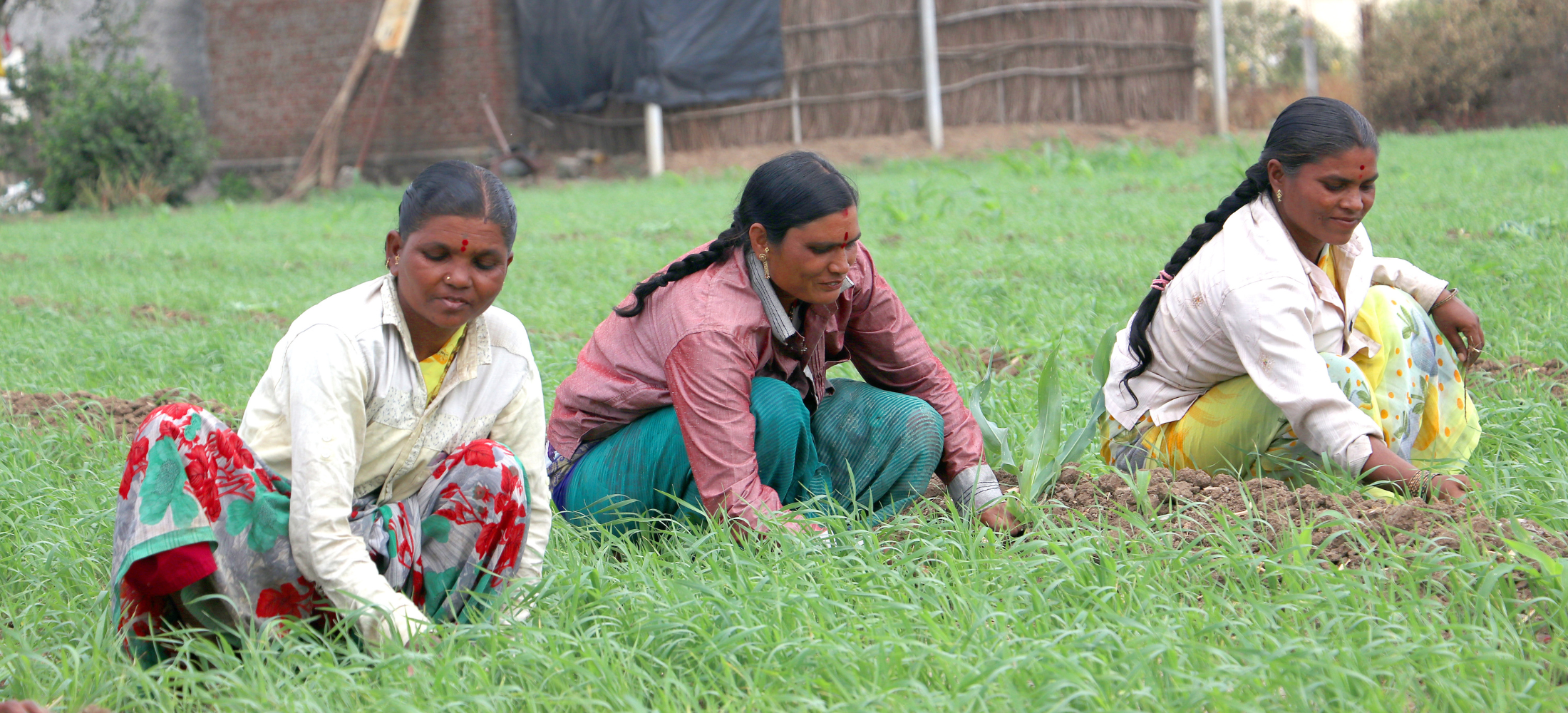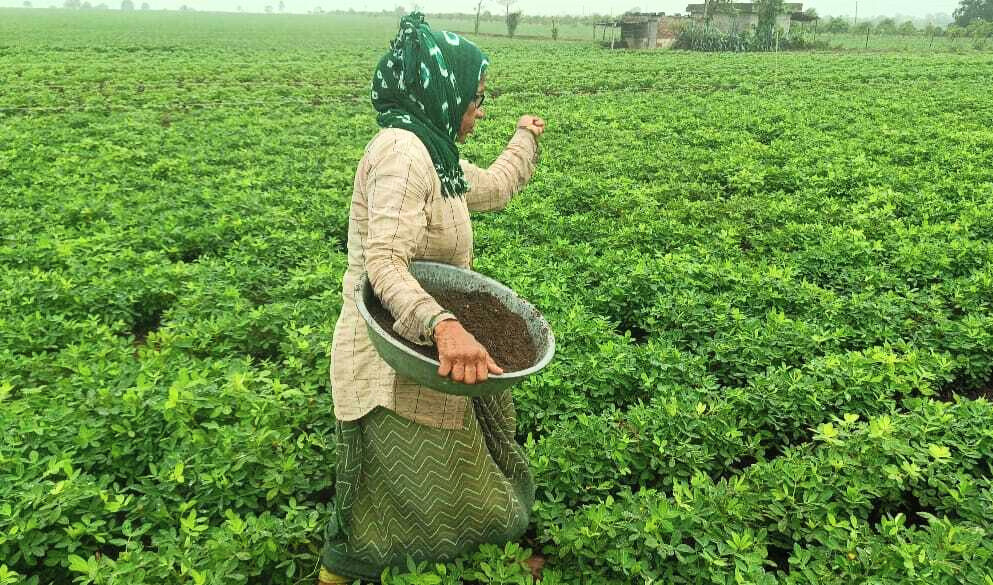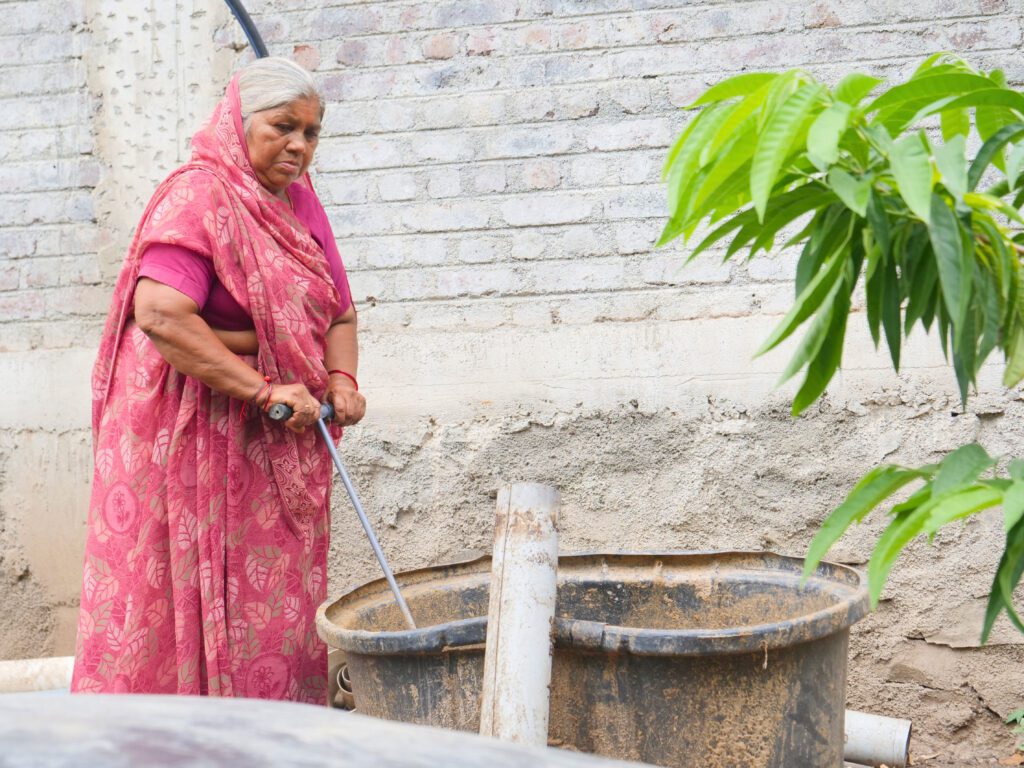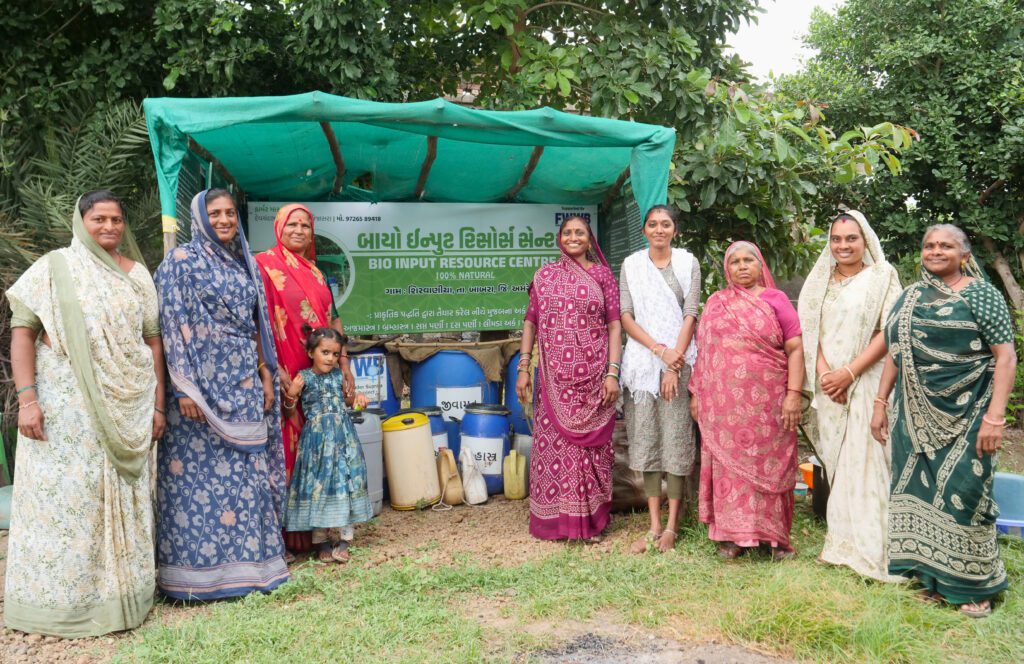
Co-authored by Purvi Bhavsar, Co-founder & Managing Director, Pahal Financial Services Pvt. Ltd
and Disha Shrivastava, Strategic Communications Consultant, FWWB
India has set its eyes on becoming a Viksit Bharat (Developed India) by 2047, the year when our nation will celebrate 100 years of independence. This vision is not just about economic growth—it is about creating a country where every citizen, whether rural or urban, male or female, has the opportunity to live with dignity, security, and prosperity.
The government has laid out the pillars of Viksit Bharat:
- Inclusive and sustainable growth
- Infrastructure development
- Employment and skill development
- Women-led development
- Green and resilient economy
Among these, the green economy has emerged as a powerful bridge connecting economic progress with environmental responsibility. Simply put, a green economy is one where growth goes hand in hand with reducing pollution, saving energy, and protecting natural resources. It is not a luxury or an option—it is a necessity.

Why Green Economy Matters for Viksit Bharat
For India to truly become a developed nation, it must balance growth with sustainability. The effects of climate change—erratic rainfall, heatwaves, floods, and crop losses—are already impacting people’s lives. If growth continues at the cost of the environment, we may solve one problem but create ten others.
A green economy ensures that progress is not just for today but for future generations as well. Let’s look at some areas where this balance matters most and where women, in particular, can play a crucial role.
1. Agriculture and Food Security
Agriculture employs nearly half of India’s population and is the backbone of rural livelihoods. However, climate change is making farming more uncertain. For example, unseasonal rains in Maharashtra often destroy onion crops, pushing up prices for consumers and hurting farmers.
Here, green practices like solar-powered irrigation, organic farming, and water-efficient crops can reduce costs and increase resilience. Women farmers, who make up more than 30% of the agricultural workforce, can be key drivers of this change if given access to training, finance, and technology.
2. The Karnataka-based Bibi Fatima Women’s Self-Help Group won the ‘UNDP Equator Initiative Award
The SHG from Dharwad was honoured for its remarkable achievements in implementing eco-friendly farming practices in rainfed lands, managing community seed banks, ensuring food and nutrition security, promoting millet cultivation, and running a millet processing unit. The group also notably prioritised climate-resilient, indigenous crop varieties. Read the full article here
3. Drone-didis
Taking advantage of the central government’s ‘Namo Drone Didi’ program, rural women in Punjab are learning to spray crops with pesticides/fertilisers using drones.
As drone pilots, they’re not only increasing their income but also promoting a promising agricultural technology that significantly brings down the time taken for this task. An impressive 1,000+ drones have been allocated to Punjab under this scheme. Read the full article here

2. Rural Employment and Livelihoods
Rural India is home to millions of workers who depend on natural resources—farming, forestry, and fishing. Green initiatives like waste-to-energy projects, solar parks, or biogas plants can create jobs while reducing environmental damage.
Self-help groups (SHGs) led by women in Bihar and Odisha are engaging in various initiatives like assembling solar cookstoves, producing organic manure, and running small recycling businesses. According to a CEEW analysis, India’s renewable energy targets could create around 1.3 million direct jobs. To harness this potential, the National Institute of Solar Energy (NISE) has launched the ‘Surya Mitra’ skill development program, focusing on training rural women to become entrepreneurs in the solar sector. This initiative not only boosts job opportunities for women but also enhances their role as skilled employees in the market. The sixth economic census from the Ministry of Statistics and Program Implementation highlights the challenging status of women entrepreneurs in the country. Women make up only 13.76% of the 58.5 million total entrepreneurs, totalling 8.05 million. Female-owned businesses employ 13.45 million people, with 34.3% in agriculture (2.76 million) and 65.7% in non-agricultural sectors (5.29 million). In agriculture, livestock leads with 31.6%, while in non-agricultural activities, manufacturing (29.8%) and retail trade (17.8%) are the most common. A World Bank study suggests that India could achieve double-digit GDP growth with increased participation of women in rural economic development. Women represent over 45% of the population, yet over two-thirds aren’t in the workforce. Ignoring this demographic undermines our potential, as many could become entrepreneurs.[1][2]
3. Housing and Energy Efficiency
India’s housing needs are set to grow rapidly as urbanisation increases. But poorly designed buildings lock us into higher electricity use for decades. Shifting to **energy-efficient housing—rooftop solar panels, rainwater harvesting, better insulation—**can reduce power bills for families and cut carbon emissions.
Affordable green housing is significant for women, who spend more time at home and manage household energy use. When women are included in housing policy discussions, solutions often focus more on safety, affordability, and sustainability.
4. Women’s Contribution to GDP
Currently, women contribute only about 18% to India’s GDP, far below their potential. Imagine what Viksit Bharat could achieve if women had equal opportunities in green sectors like renewable energy, sustainable farming, and eco-entrepreneurship.
For example, women-led startups in clean energy are already emerging. One such enterprise trains women technicians to install and maintain solar panels in rural areas. These women not only earn an income but also help their communities access clean power. In the Indian MSME sector, women-led businesses are about 20.37% and contribute around 23.3% of the labour force, according to a report from the Indian Brand Equity Foundation (IBEF). There are 13.5 to 15.7 million businesses owned by women that employ 22-27 million people. They are considered the backbone of the Indian economy. It is also estimated that the national economy could add up to USD 770 billion, which is 18% more than the global GDP by 2025, with increased participation of women in the labour force. With an increase in the number of startups and adoption of an inclusive work culture, it is expected that women-led businesses will grow 90% in the next 5 years. According to recent government data released, the female labour force participation rate rose to 24% in Q2 FY24 from 23.2% in the previous quarter and 21.7% in Q2 FY23.[3]
Empowering women in the green economy is not just about fairness—it is smart economics. Studies show that closing the gender gap in the workforce could increase India’s GDP by 27%.
The Road Ahead
Building a green economy for Viksit Bharat requires collective effort:
- Government policies that promote renewable energy, sustainable farming, and green jobs.
- Private sector investments in clean technologies and inclusive workplaces.
- Community participation, especially from women, is needed to ensure that solutions work on the ground.

The concept is straightforward yet powerful: development should not necessitate a trade-off between creating jobs and protecting the environment. Instead, these two goals should progress in harmony. Picture a farmer cultivating climate-resilient crops, carefully selecting varieties that can thrive in changing weather patterns while enriching the soil and supporting local ecosystems. Imagine a skilled mason constructing energy-efficient homes, implementing innovative designs and materials that minimise energy consumption and reduce the carbon footprint. Envision a woman at the helm of a solar-powered business, harnessing renewable energy to not only power her operations but also to provide sustainable energy solutions for her community. Each of these individuals plays a vital role in fostering economic growth while simultaneously driving efforts toward decarbonization, illustrating that environmental stewardship and employment generation can coexist and even thrive together. While we focus on supporting and providing amenities and funds for green entrepreneurs, it is also essential to educate and build an ecosystem for consumers. End-users and consumers contribute to increasing a green economy’s GDP by spending on sustainable products and services, which shifts market demand towards environmentally friendly businesses, adopting sustainable lifestyles that promote resource efficiency and reduce waste, and engaging in sustainable consumption patterns like recycling and opting for shared or reused goods, driving economic activity in green sectors and fostering innovation.
Conclusion
Viksit Bharat is not just about tall skyscrapers or fast highways. It is about creating a nation where prosperity is sustainable, opportunities are inclusive, and growth is green. A green economy is the pathway that will help India achieve this dream—an economy that secures food, jobs, housing, and dignity for all, while protecting the planet.
And in this journey, the role of women—as farmers, workers, entrepreneurs, and leaders—will be the game-changer.
